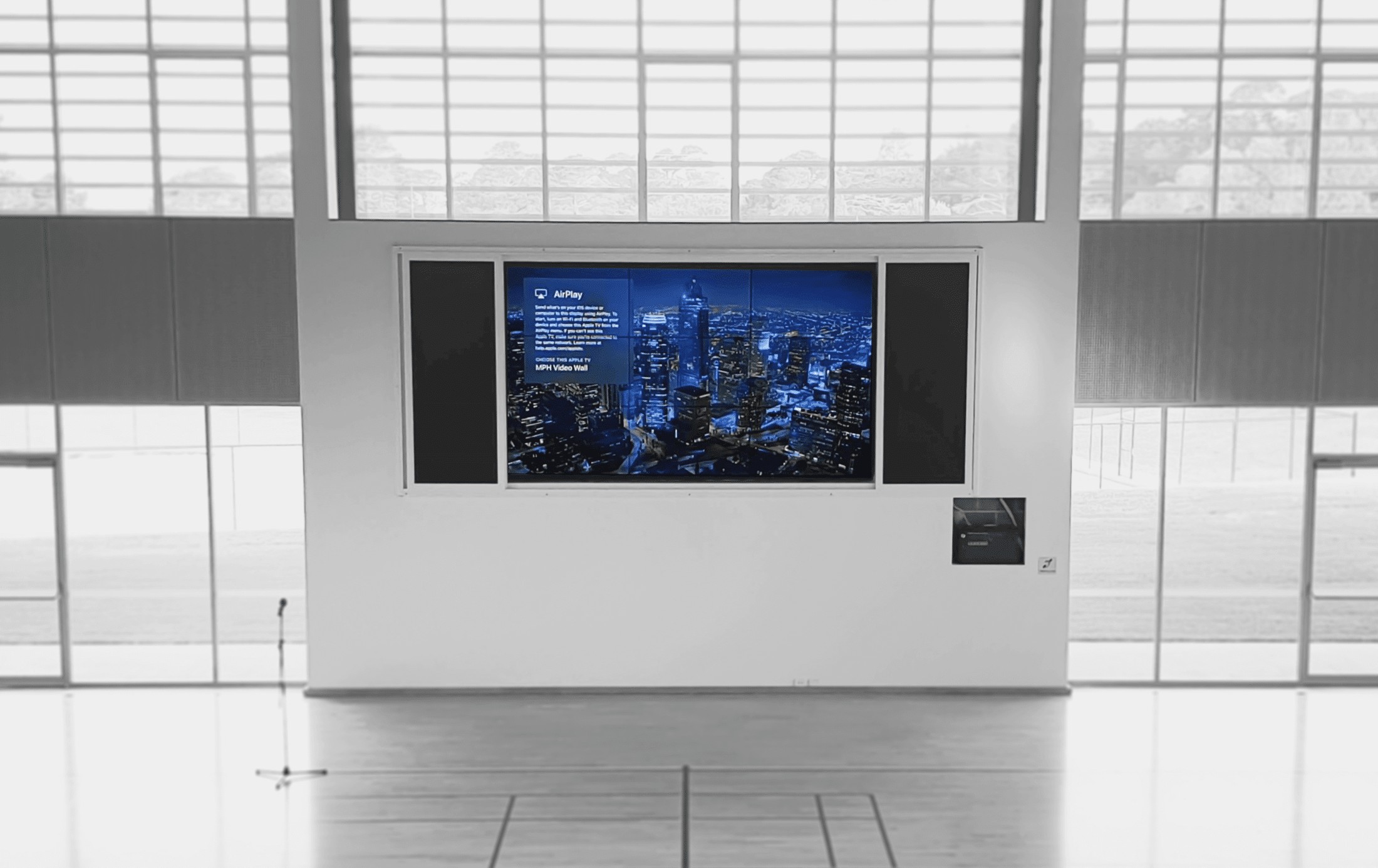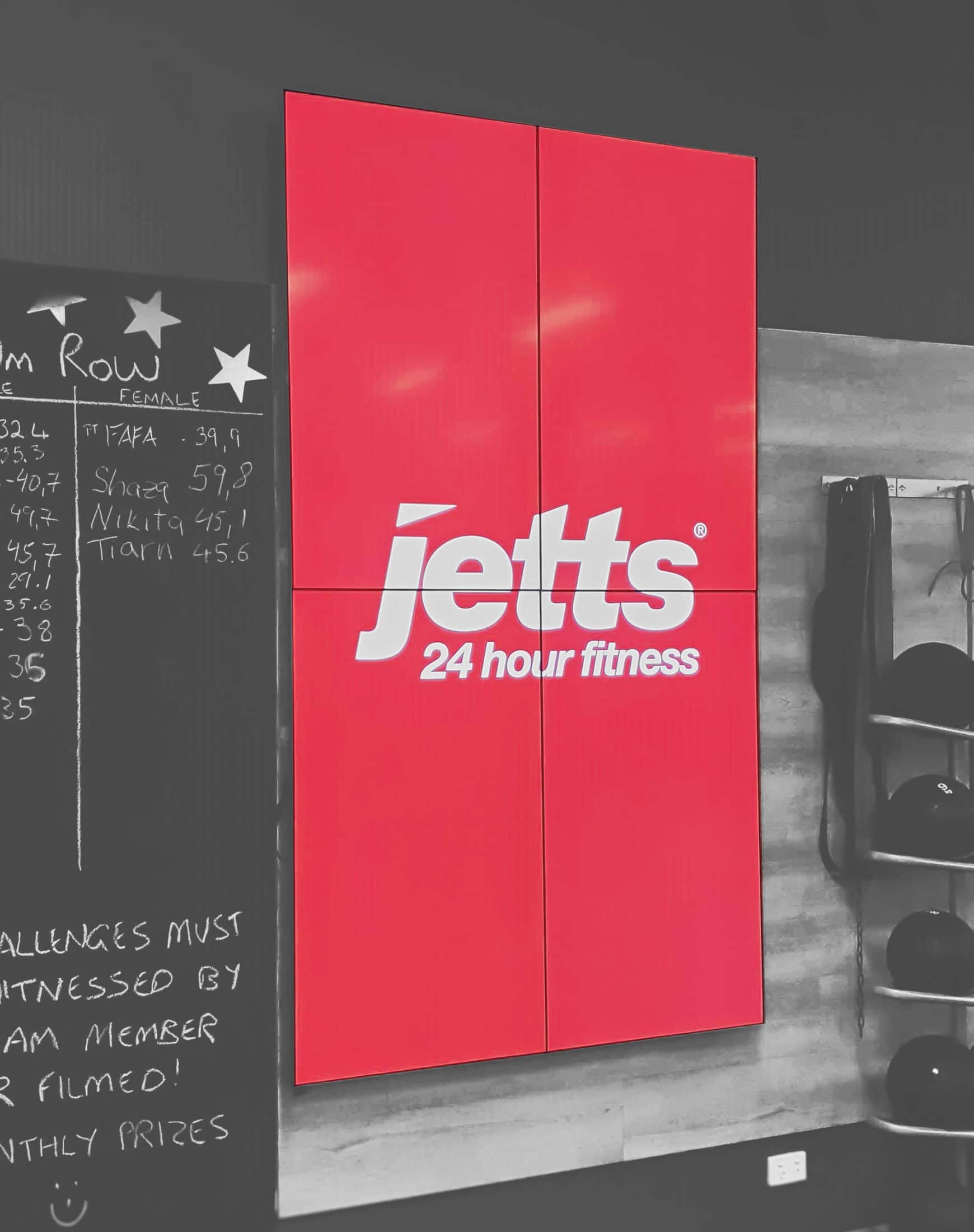Direct-view LED video walls are a powerful tool for businesses looking to make a big impact on their visitors and customers with digital signage. But with so many options available, it can be difficult to know where to start. This guide will help you understand the different types of LED display screens and important factors to consider when choosing a video wall system.

Understanding LED Video Walls
LED walls are comprised of multiple LED display panels that are seamlessly connected to create a large, high-resolution display. The panels that make up an LED video wall are typically made up of small, light-emitting diodes that are arranged in a grid pattern. These diodes emit high-brightness lights in a variety of colours, allowing for the creation of vibrant, eye-catching displays.
Types of LED video walls and their applications
Direct-view LED displays can come in different formats, each with its own specifications and applications. Here are some of the most common types of LED displays and their typical uses.
Indoor LED video wall
Indoor LED video walls are designed to be used in indoor environments such as retail stores, showrooms and museums. They generally have high resolution and pixel density, which makes them ideal for displaying detailed graphics and text. Indoor LED video walls can be customised in size, shape, and configuration to suit different installation requirements.
Outdoor LED video wall
LED video walls designed for outdoor use are engineered to endure extreme weather conditions, making them the perfect solution for outdoor events, stadiums, and advertising. They are typically brighter and have a wider viewing angle than indoor video walls, which ensures that the content displayed can be seen, even from a distance.
Cube LED video wall
Cube LED video walls are a type of 3D LED display that allows for the creation of immersive and interactive experiences. They consist of LED panels arranged in a cube-like structure, with content displayed on each side of the cube.
A cube LED video wall in most cases will require specialised software and hardware to create and display content, making them more complex and costly than other types of LED video displays. However, the unique and immersive experiences that they offer can make them a worthwhile investment for businesses looking to create memorable and impactful experiences for their audiences.
Curved LED video wall
Curved LED video screens are designed to create a seamless display in curved or irregular spaces such as retail stores, exhibition booths, and event spaces. They can be configured in different sizes and shapes, allowing businesses to create a unique visual impact in their space.
Interactive LED video wall
Interactive LED video walls allow users to interact with the content, making them ideal for use in retail spaces, museums, and educational institutions. They can be used to showcase product features, provide information, or engage people in immersive experiences.

Alternative Large Video Walls
While LED displays are among the most popular choices for digital signage, there are other video display systems that businesses may want to consider. These alternative wall display systems can offer unique features and benefits that may be better suited for specific applications.
LCD Video Wall
LCD video walls are a cost-effective alternative to a LED solution, which is commonly used in commercial and public spaces. One advantage of LCD video walls is that they generally have a higher resolution than an LED video wall, making them a good choice for displaying detailed content such as text or graphics. LCD can also provide better colour accuracy and a wider colour gamut than LED video walls, which can be important for displaying branding or colour-sensitive content.
Projector Wall
Projector walls are an alternative video wall system that uses multiple projectors to create a seamless, large-scale image. This system is ideal for applications where a large image is required, but a traditional LED or LCD video wall is not feasible due to space constraints, budget or other limitations.

Factors to Consider When Choosing an LED Video Wall
When choosing an LED video wall solution, there is a range of factors to consider. These factors can range from the intended purpose and display surface of the video wall to the technical specifications of the display, and can ultimately impact the overall effectiveness and longevity of the investment.
Viewing Distance
Viewing distance is a crucial factor to consider when selecting an LED video wall solution. The viewing distance refers to the distance between the viewer and the LED video wall display. The size and resolution of the display should be chosen according to the viewing distance.
For instance, if the display is intended to be viewed from a distance of 10 feet or more, a lower resolution may be sufficient. However, if the display is intended to be viewed from a closer distance, such as in an indoor retail space, a higher resolution will be required to ensure that the content is crisp and clear.
Pixel Pitches
Additionally, the pixel pitches of the LED wall should also be considered in relation to the viewing distance. Pixel pitches relate to the distance between individual LED pixels on the display. A lower pixel pitch will result in a higher pixel density and a crisper image, making it ideal for displays that will be viewed from a closer distance.
It is important to strike a balance between the size, resolution, and pixel pitches of the LED wall display to ensure that the content is clear and legible from the intended viewing distance.
![]()
Brightness
Brightness is measured in nits, and a higher nit rating indicates a brighter display. A high nit rating is important when the display is intended to be used in a brightly lit environment or outdoors where the sun may be shining directly on the display.
Viewing Angles
Viewing angles is another important consideration as they refer to the angle at which a viewer can see the content on display without experiencing colour distortion or loss of brightness. A wider viewing angle is important when the display is intended to be viewed by a large audience or from different angles.
Content Management
Additional features, such as content management software or interactive capabilities, can enhance the user experience and provide greater flexibility in displaying content. Content management software allows for easy scheduling and management of content across multiple displays, while interactive capabilities can engage and captivate audiences with immersive experiences.
Installation Requirements
Installation requirements may vary depending on the type of LED video wall and the display surface. For example, outdoor LED video displays may require additional weatherproofing and mounting hardware, while indoor LED display walls may require specialised rigging equipment for ceiling or wall installations.
Contact the Amped Digital LED Wall Experts
LED video wall technology is a popular choice for creating impactful digital signage displays. Choosing the right solution can be daunting, but Amped Digital can help. Our experts design and install the highest quality custom video wall solutions. Contact us for any questions and to start your next LED project.










